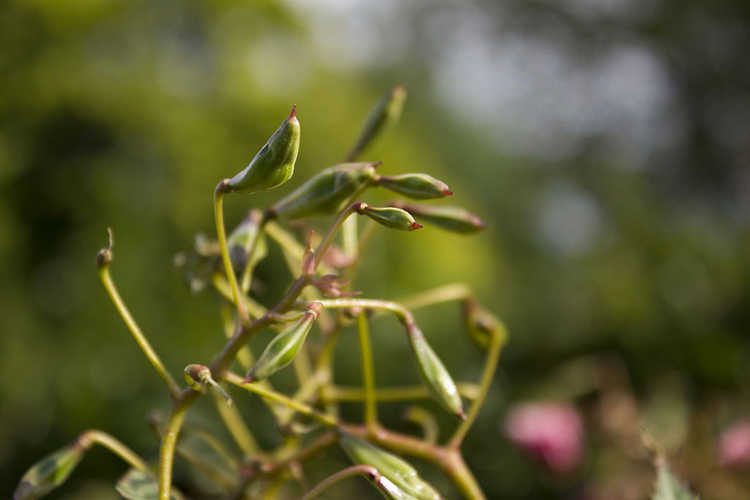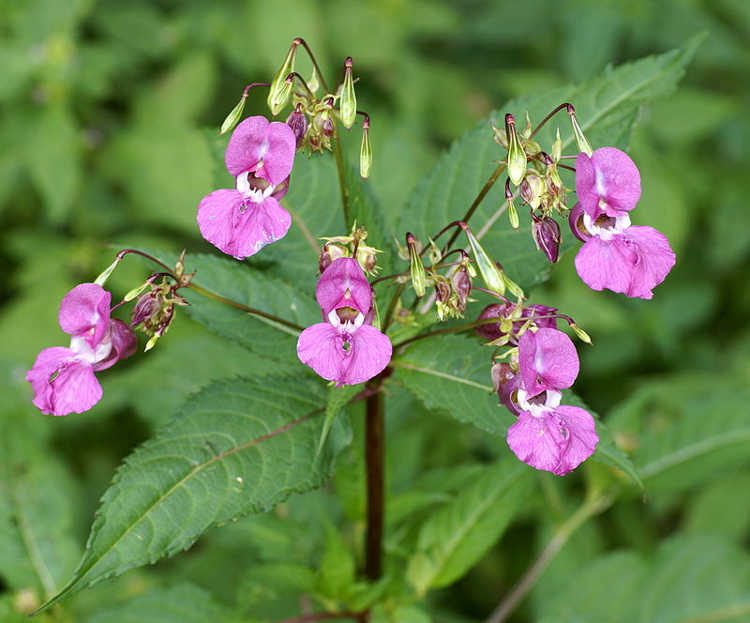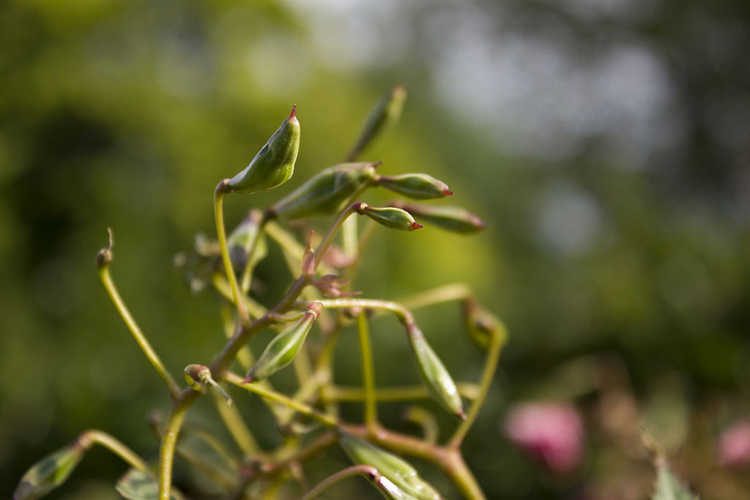Impatiens glandulifera, commonly known as the Himalayan Balsam, is an invasive plant with a very peculiar colonizing system – its seed pods literally explode when touched or otherwise disturbed, shooting the seeds up to 7 meters in every direction.
A native of India and Pakistan, the Himalayan Balsam has managed to invade 23 European countries, as well as the United States, Canada and even New Zealand. Its exploding seed pods allow the plant to rapidly spread into nearly impregnable thickets that reach over 3-meters-tall, smothering all other plant life to death. However, humans have played a pretty big part in its successful colonization of the world. You see, this isn’t just another invasive weed, it’s a very attractive one. The Balsam has these beautiful purple flowers that people love so much that they historically spread seeds in the wild just so they could see them on the sides of roads. Today, many communities around the world are struggling to keep the plant in check, organizing seasonal “bashing” sessions to clear large swathes of land. and protect other plant life.

Photo: Benimation/Wikipedia Commons
The Himalayan Balsam was introduced in the UK in 1839 as a greenhouse and garden plant, but it only took a few decades for it to escape into the wild. Apart from its attractive flowers, the exploding seed pods made it uniquely appealing. There was a time when the plant was marketed as a novelty attraction for children, under the name ” Mr. Noisy’s Exploding Plant”, and despite its now known invasive tendencies people still love popping those pods every chance they get. Granted, it’s an oddly satisfying experience.
When ripe, the seed pods of the Himalayan Balsam will explode at the slightest of stimuli. Simply touching them with your finger, dangling the plant stem or even walking past them can cause the pods to pop, launching the seeds meters away in every direction. Every plant has dozens of pods which contain an average of 800 seeds, so a thicket of Himalayan Balsam can contain up to 30,000 of these tiny bullets just waiting to take root.

Photo: Udo Schmidt/Flickr
The main issue with this plant is that it’s very aggressive, muscling out native plants until it’s the only one left. That’s particularly problematic on riverbeds, where it leaves vast swaths of land exposed to harsh winters as well as erosion. It has been blamed for natural disasters such as landslides and altering the flow of rivers, which leads to flooding.
“The problem with it is that it creates quite vast stands which compete with our native flora,” Emma Harrington, of the Wiltshire Wildlife Trust, told the BBC. “In the winter it dies back and leaves bare soil, so then you’ve got a risk of soil erosion and it can contribute to flash flooding.”
To combat the effects of Himalayan Balsam on the environment, conservationists regularly organize clearing parties to uproot the plant from particularly sensitive areas. The problem is that such actions need careful planning, as if the pods are ripe, the slightest touch can cause them to pop, shooting fresh seeds everywhere and keeping the cycle going.
Interestingly, the plant’s Latin name, Impatiens glandulifera, speaks of its impatience to spread far and wide, using a fascinating evolutionary mechanism.
The threat of the Himalayan Balsam has been compared to that of Japanese Knotweed, another invasive plant the spread of which has so far proved virtually impossible to control.













